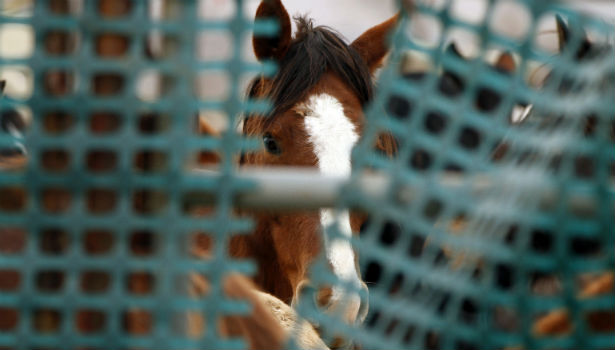By Amy Joi O'Donoghue, Deseret News
December 12, 2020
SALT LAKE CITY — A federal effort to permanently remove 480 wild horses from western Utah also includes a plan to surgically sterilize more than a dozen mares that will be returned to the range.
The procedure, which has never been performed before on wild horses under the purview of the Bureau of Land Management, was done on mares occupying a national wildlife refuge in Nevada with success, federal officials say.
But some wild horse advocates are condemning both the Confusion herd gather and the planned surgeries for next spring or summer, asserting the method is both unwarranted and cruel.
“It is not a population management tool,” said Grace Kuhn, communications director for the American Wild Horse Campaign. “It is pretty barbaric.”
On Thursday, Return to Freedom Wild Horse Conservation filed suit in federal court in California to halt the federal agency’s plan to surgically sterilize wild mares. It, too, asserted the procedure is dangerous, inhumane and an unnecessary risk. Another lawsuit by the American Wild Horse Campaign and Utah resident Robert Hammer was filed Thursday challenging the “social acceptability” of the experiments and asserting that the federal agency’s resource management plans do not authorize the procedure.
But the BLM says the 551 wild horses that were in this region of state are 479% above the target population of between 70 and 115 horses, and the last gather with this particular herd happened more than a decade ago. The roundup that started in late November resulted in 304 captured animals and five deaths, the BLM reported Wednesday. One foal and a mare were euthanized due to injuries and three other mares were euthanized due to poor body condition, the agency said.
Wild horse overpopulation is a critical problem, the agency said, with rangeland that can’t support excess horses that compete with wildlife for forage and water.
In a series of articles last year by the Deseret News, BLM officials said if populations of wild horses are left unchecked it could explode into a $5 billion problem that will take a decade or more to fix.
The problem also includes degraded rangeland made worse by wildfires and persistent drought in Utah and elsewhere in the West where wild horses managed by the BLM exist, with the agency and ranchers having to truck water to the animals at risk of a slow and painful death from dehydration.
Kuhn’s organization asserts the federal agency is using outdated and artificial population limits, and it instead should direct its efforts to darting animals for fertility control.
The BLM has countered that darting in some herd management boundaries is an impractical method given the remoteness, the terrain and other conditions.
Kuhn said there is little public support for the surgical procedure to be performed on mares, citing a poll the Animal Welfare Institute commissioned that said 77% of U.S. citizens oppose the surgery.
Last month, 58 members of Congress urged Interior Secretary David Bernhardt to call off the planned surgeries for the Confusion mares.
The procedure in question, known as ovariectomy via colpotomy, involves a veterinarian manually reaching into the mare’s abdominal cavity via the vaginal canal, blindly locating the ovaries then using a device called an ecraseur to sever and remove the ovaries, according to the wild horse campaign.
In the BLM’s decision document supporting the gather and sterilization of the mares, the agency said the procedure would be performed at a private veterinarian’s facility using appropriate sedation, anesthesia and antibiotics.
The procedures would be observed by another veterinarian with no affiliation with the BLM, it added, and the mares would remain in postoperative care until they are deemed healthy enough to return to the wild, the document said.
In addition, it pointed to the 2017 use of the surgery in Nevada at the Sheldon Wildlife Refuge on wild mares that demonstrated “an acceptable level of safety for people and the horses.”
The procedure lasts 15 minutes for the animals, which according to the environmental analysis, occurs in an area of the mare’s body that does not have nerves.
Kuhn said wild horse campaign successfully got BLM to back off the procedure for wild horses in Oregon with litigation.


